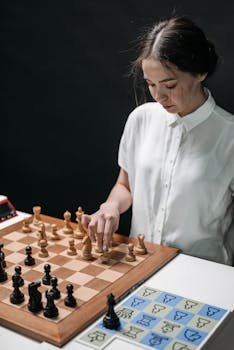
Understanding AI Art’s Role in Modern Game Creation
Artificial intelligence (AI) art is reshaping the landscape of game development with unprecedented speed and innovation. Developers increasingly rely on AI-generated assets to streamline workflows and enhance creative possibilities.
The integration of AI art tools is revolutionizing concept design, character modeling, and environmental art in games. These advancements enable a more dynamic and efficient production pipeline than traditional methods.
AI-Generated Art: A New Creative Resource
AI art systems create visuals by processing vast datasets and using machine learning algorithms to generate new images. This capability offers game designers a powerful tool to rapidly prototype and iterate on artistic ideas.
However, the speed and volume of AI-generated content raise questions about originality and ownership in intellectual property law. Understanding these issues is critical for game developers who utilize AI art.
Legal Complexities Surrounding AI Art Copyright
Copyright law is traditionally designed to protect human-created works, complicating its application to AI-generated art. Courts and lawmakers are currently grappling with how to assign rights when the creative process involves artificial intelligence.
One primary challenge is determining whether AI art qualifies for copyright protection and, if so, who holds the rights. This uncertainty impacts how game developers manage their AI-assisted assets.
Authorship and Ownership in AI Creations
Copyright legislation generally requires a human author to claim ownership, leaving AI-generated art in a legal grey area. Developers must consider whether they can claim authorship for works partially or fully created by AI tools.
Some argue that the person directing the AI or providing input should be considered the author, while others suggest that AI-generated works lack human authorship altogether. This distinction affects licensing, monetization, and legal enforcement.
Human Input and Creative Control
The degree of human involvement in the AI art generation process plays a crucial role in copyright eligibility. Significant human creative decisions enhance the likelihood that a work is protected under existing laws.
For example, adjusting AI parameters, selecting outputs, or combining AI-generated elements with original content may establish authorship claims. Documentation of these processes is advisable for legal clarity.
Potential Copyright Risks for Game Developers Using AI Art
AI art can inadvertently infringe on existing copyrighted works if the training datasets include protected images. Developers risk legal challenges if their AI-generated assets are too derivative of copyrighted material.
Additionally, the use of AI art with unclear or unauthorized datasets can result in disputes over ownership and licensing. It is vital for developers to audit their AI tools and datasets for compliance.
Dataset Transparency and Licensing Issues
Many AI art generators utilize large, often proprietary datasets whose licensing terms are not fully disclosed. This opacity complicates understanding whether outputs can be legally used in commercial games.
Developers must prioritize AI tools that provide clear information about dataset sources and usage rights. Failure to do so exposes projects to copyright infringement claims and financial penalties.
Evaluating AI Art Licenses
Licenses attached to AI art outputs vary widely, affecting how developers can use, modify, or redistribute assets. Some licenses may restrict commercial use or require attribution, which conflicts with game publishing needs.
Reviewing end-user license agreements (EULAs) and terms of service is an essential step before incorporating AI art into game development workflows. Legal counsel can provide insights specific to complex licensing frameworks.
Best Practices for Managing AI Art Copyright in Game Development
Implementing robust policies and workflows mitigates copyright risks associated with AI-generated art. Developers should establish clear guidelines for sourcing, using, and documenting AI-created assets.
Collaboration between legal teams and creative departments is necessary to navigate uncertainties and ensure compliance. This partnership helps maintain the integrity and legality of game content.
Steps to Protect Game Projects Using AI Art
First, vet AI art providers for reputable dataset sourcing and transparent licensing. Selecting tools with explicit rights assurance reduces the risk of copyright conflicts.
Second, maintain detailed records of human contributions in the AI art creation process. This documentation supports potential authorship claims and facilitates defense against infringement allegations.
Table: Key Considerations for AI Art Usage in Game Development
| Consideration | Details |
|---|---|
| Dataset Transparency | Confirm datasets are legally sourced and compliant with copyright laws. |
| License Terms | Understand commercial usage rights, modification permissions, and attribution requirements. |
| Human Involvement | Document creative inputs and decisions made by humans in generating AI art. |
| Legal Consultation | Engage IP attorneys to interpret ambiguous copyright scenarios and contracts. |
| Risk Assessment | Evaluate potential infringement risks before integrating AI art into projects. |
Emerging Legal Developments and Industry Trends
Legislators and courts worldwide are actively considering updates to copyright laws to address AI-generated works. Game developers should monitor these changes to adapt their strategies proactively.
Some industry groups are advocating for clearer guidelines and standardized licenses for AI art to foster innovation while protecting rights holders. Staying informed about these initiatives is vital for long-term project security.
Impact on Future Game Design Practices
As legal frameworks evolve, the role of AI in game art creation will likely expand with defined boundaries. Developers who understand and respect copyright constraints will benefit from smoother production and reduced litigation risk.
Investing in AI literacy and legal knowledge equips creative teams to harness AI art effectively and responsibly. This foresight is essential for sustaining innovation in the competitive gaming industry.